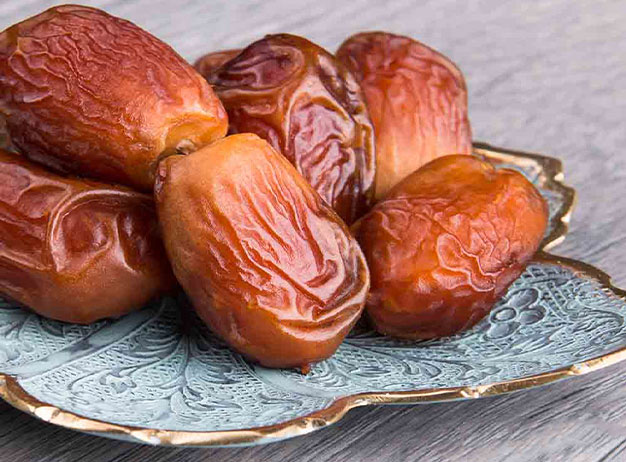Decoding Date Pricing: Agriculture’s Impact on Harga Kurma

Harga Kurma refers to the price or pricing of dates. “Harga” is a Malay word meaning “price,” and “Kurma” is the Indonesian word for “dates.” It is commonly used to refer to the cost or value associated with different varieties of dates, including Ajwa dates, Medjool dates, or other types of dates available in the market.
The Fascinating World of Harga Kurma
1. Cultivation Methods
Traditional vs. Modern Techniques
The cultivation methods employed in the agriculture industry play a crucial role in determining the price of dates. Traditional cultivation techniques, relying on manual labor and traditional irrigation systems, can be time-consuming and labor-intensive. In contrast, modern techniques, such as advanced irrigation systems and mechanized processes, can increase efficiency and reduce production costs. The choice of cultivation method impacts the overall supply and pricing of dates.
2. Climate and Geographic Factors
The Role of Climate
Dates thrive in specific climatic conditions, such as arid or semi-arid regions with long, hot summers. The availability of suitable climates affects the cultivation of dates and influences their pricing. Regions with favorable climatic conditions for date production have a higher supply, resulting in potentially lower prices compared to regions with less favorable climates.
Geographic Factors
The geographic location of date palm groves also impacts the pricing of dates. Transportation costs, proximity to markets, and accessibility to resources and labor can vary based on the location. Dates grown in remote areas or regions with limited infrastructure may incur higher transportation costs, which can affect their pricing.
3. Labor and Production Costs
Manual Labor
The cultivation and harvesting of dates often require significant manual labor. The availability and cost of labor influence the production costs, which, in turn, impact the pricing of dates. Regions with higher labor costs may have higher-priced dates due to increased production expenses.
Processing and Packaging
The costs associated with processing and packaging also contribute to the overall pricing of dates. Techniques such as cleaning, sorting, packaging, and quality control require investments in equipment and skilled labor. These expenses are factored into the final price of dates.
4. Market Dynamics and Demand
Supply and Demand Balance
Market dynamics, including supply and demand, play a significant role in determining date prices. Fluctuations in supply due to factors such as weather conditions, disease outbreaks, or changes in cultivation practices can impact prices. Similarly, consumer demand, influenced by factors like cultural traditions, dietary preferences, and health trends, can affect market prices.
Export and Import Factors
The import and export policies, tariffs, and regulations of different countries also influence date prices. Trade agreements, transportation costs, and market competition impact the availability and pricing of dates in various regions.
Some traditional cultivation techniques used in the agriculture industry for dates include:
1. Manual Pollination:
In traditional cultivation, date palm trees are manually pollinated to ensure successful fruit production. This process involves transferring pollen from the male flowers to the female flowers by hand, often with the use of a small brush or by shaking the branches.
2. Traditional Irrigation Systems:
Traditional cultivation methods often rely on traditional irrigation systems, such as falaj or qanat, which are ancient methods of water management. These systems involve diverting water from natural sources, such as rivers or underground wells, and distributing it to the date palm groves through a network of channels or underground tunnels.
3. Hand Pruning and Thinning:
To maintain the health and productivity of date palm trees, traditional cultivation involves hand pruning and thinning. This process includes removing dead or diseased fronds, thinning out excessive growth, and maintaining an optimal balance of foliage for proper sunlight penetration and air circulation.
4. Traditional Harvesting:
Traditionally, dates are harvested by hand when they reach the desired level of ripeness. Skilled workers climb the date palm trees using ropes or ladders and carefully cut the ripe fruit clusters from the trees. This labor-intensive method ensures the careful handling of the dates to prevent damage.
These traditional cultivation techniques have been practiced for generations and are still used in certain regions today, particularly in areas where modern agricultural practices have not been widely adopted. While these methods may be time-consuming and labor-intensive, they contribute to the unique characteristics and traditional charm of date cultivation.
Key Highlights:
Conclusion
The pricing of dates, reflected in Harga Kurma, is influenced by a multitude of factors within the agriculture industry. Cultivation methods, climate, labor costs, processing expenses, market dynamics, and export-import factors all contribute to date prices. Understanding the interplay between these factors provides valuable insights into the value and complexity of Harga Kurma. Whether savoring a delicious date on its own or incorporating it into culinary creations, appreciating the factors behind date pricing enhances the enjoyment of these delectable fruits.